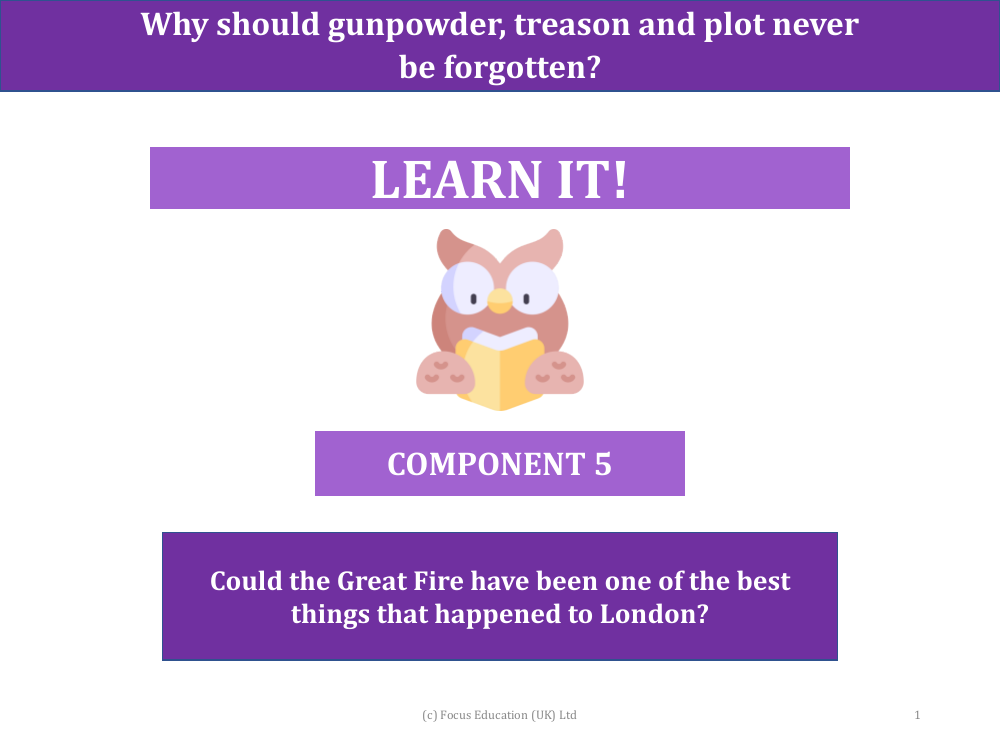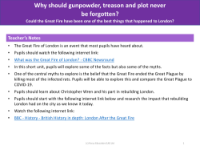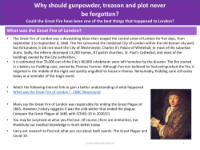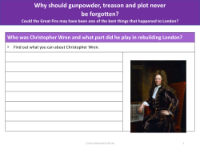Could the Great Fire have been one of the best things that happened to London? - Presentation

History Resource Description
The presentation poses a thought-provoking question: Could the Great Fire of London have been one of the best things to happen to the city? This educational material encourages pupils to delve into the history surrounding the catastrophic event that took place from September 2 to September 6, 1666. The fire devastated the medieval City of London, leaving approximately 70,000 residents homeless as it consumed homes, churches, and even the iconic St. Paul's Cathedral. Originating from Thomas Farriner's bakery on Pudding Lane, the fire's legacy is still remembered today, with the street remaining as a historical landmark. The presentation also challenges a common myth that the Great Fire ended the Great Plague of 1665, suggesting instead that it was the cold winter that quelled the pandemic, and invites students to compare the plague with the recent COVID-19 crisis, highlighting advancements in medical knowledge.
In the wake of the fire, the city underwent a significant transformation, with Sir Christopher Wren playing a pivotal role in the rebuilding of London. Students are prompted to research Wren's contributions and the broader impact of the city's reconstruction. The presentation encourages collaborative learning, asking students to work in pairs and gather at least eight facts about the improvements made to London post-fire. This historical inquiry not only explores the immediate aftermath but also considers the long-term benefits that emerged from the ashes of the disaster, prompting a discussion on whether such a devastating event could paradoxically be seen as a catalyst for positive change.




